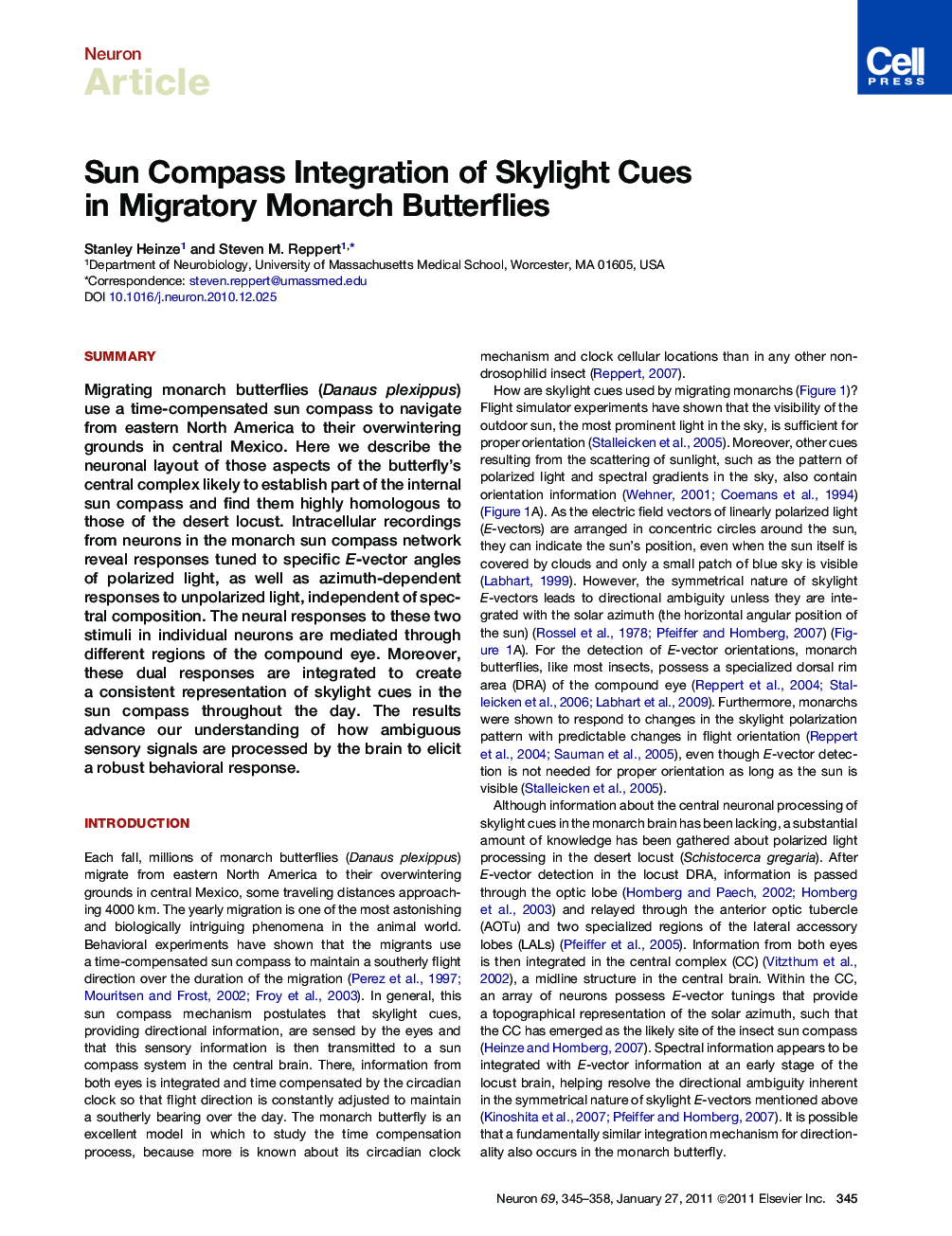| Article ID | Journal | Published Year | Pages | File Type |
|---|---|---|---|---|
| 4322231 | Neuron | 2011 | 14 Pages |
SummaryMigrating monarch butterflies (Danaus plexippus) use a time-compensated sun compass to navigate from eastern North America to their overwintering grounds in central Mexico. Here we describe the neuronal layout of those aspects of the butterfly's central complex likely to establish part of the internal sun compass and find them highly homologous to those of the desert locust. Intracellular recordings from neurons in the monarch sun compass network reveal responses tuned to specific E-vector angles of polarized light, as well as azimuth-dependent responses to unpolarized light, independent of spectral composition. The neural responses to these two stimuli in individual neurons are mediated through different regions of the compound eye. Moreover, these dual responses are integrated to create a consistent representation of skylight cues in the sun compass throughout the day. The results advance our understanding of how ambiguous sensory signals are processed by the brain to elicit a robust behavioral response.Video Abstract To view the video inline, enable JavaScript on your browser. However, you can download and view the video by clicking on the icon belowHelp with MP4 filesOptionsDownload video (33600 K)
► The neuronal machinery of the monarch butterfly's internal sun compass was defined ► Sun compass neurons respond to specific angles of polarized and unpolarized light ► Neuronal skylight responses are mediated through different parts of compound eye ► Dual neuronal responses create a consistent skylight representation in the compass
